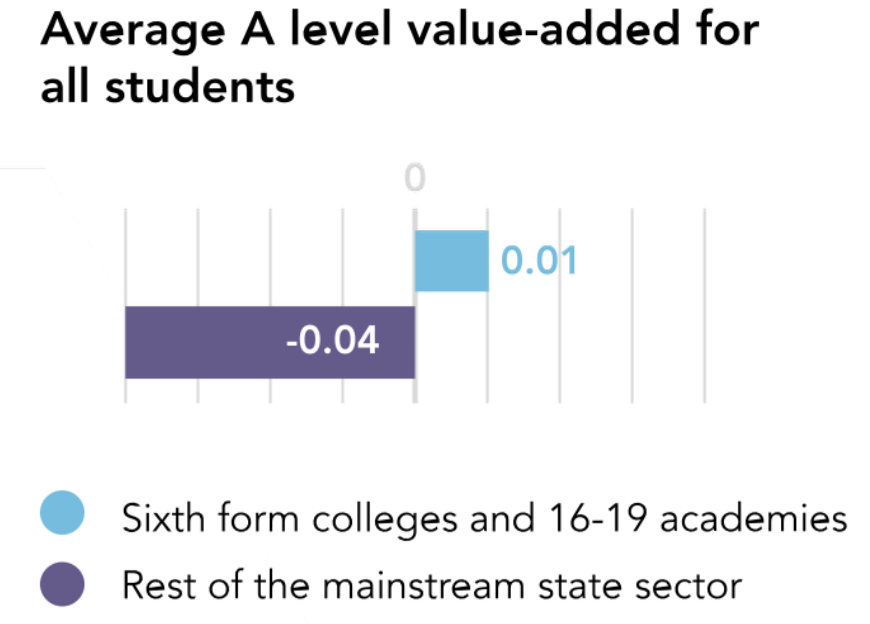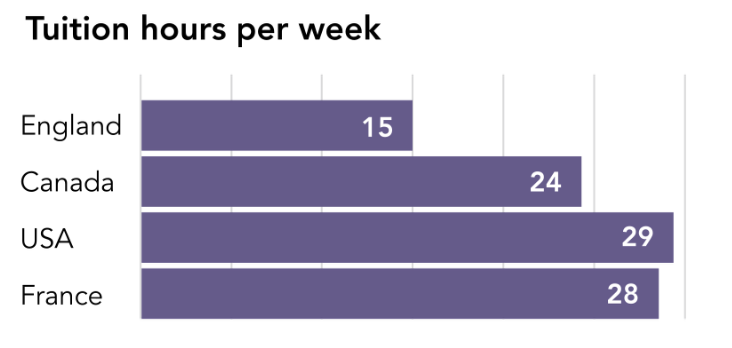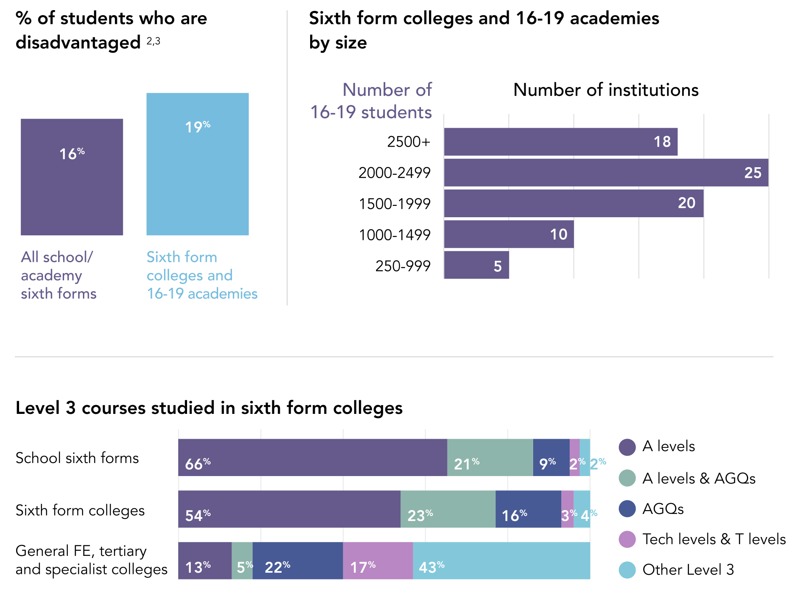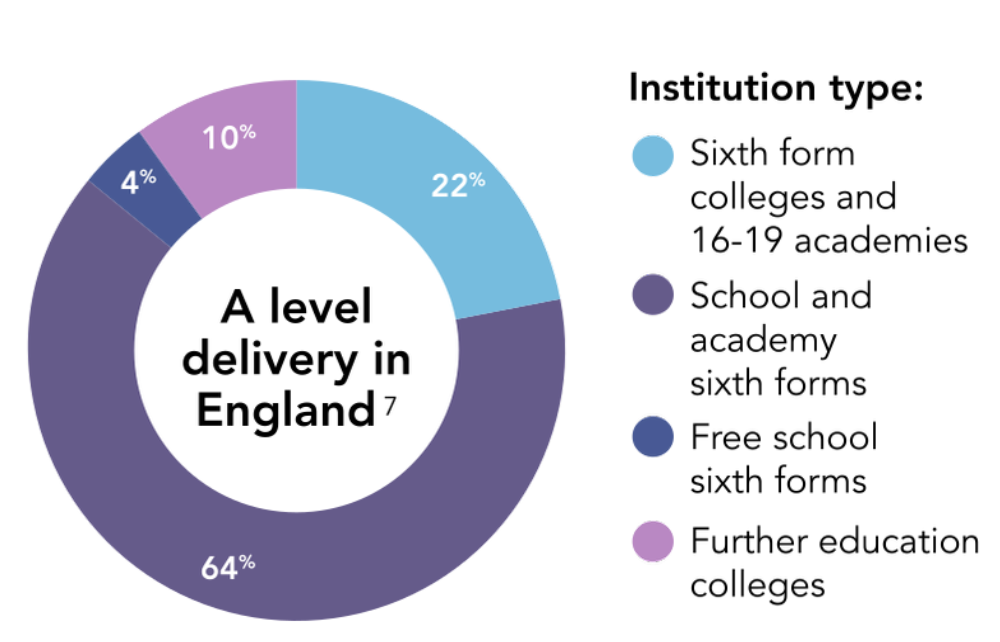- Home
- Publications
- Recent Publications
- Key Facts and Figures
Key Facts and Figures
BackThe Sixth Form Colleges Association is the established voice of dedicated sixth form education and the hub of a national network of sixth form providers. SFCA represents all designated sixth form colleges and 16-19 academies in England, as well as a growing number of Further Education colleges and 16-19 free schools. This document provides information on our sixth form college and 16-19 academy members and their students.
16-19 students
| Number of institutions | Total number of 16-19 students1 | Average number of 16-19 students | |
|---|---|---|---|
| Sixth form colleges and 16-19 academies | 78 | 168,794 | 2,164 |
| Academy/school sixth forms | 1903 | 427,432 | 226 |
16-19 performance
Sixth form colleges and 16-19 academies are responsible for educating over a fifth (22%) of A Level students in the mainstream state sector in England each year and help their students to achieve better exam results than the rest of the state sector.
| Average A-level point score per entry for all students | |
|---|---|
| Sixth form colleges and 16-19 academies | 35.1 |
| Rest of the mainstream state sector | 34.4 |

16-19 funding
Sixth form education is funded at a lower rate than both pre-16 and higher education.
According to the Institute for Fiscal Studies, the average funding of £5,500 per student received by sixth form colleges is 26% less than the funding received to educate younger students in secondary schools, and 41% less than the average university tuition fee of £9,250.4, 5
The underfunding of 16-19 education is felt particularly acutely by sixth form colleges as, unlike schools and academies, they cannot cross subsidise from the higher funding available for younger students and do not have their VAT costs reimbursed. This is a tax on learning that requires the average sixth form college to redirect around 4% of its annual funding away from the front line education of students to pay VAT.
| Annual education funding per student | |
|---|---|
| 5-16 education | £7,400 |
| 16-19 education (in sixth form colleges and 16-19 academies) | £5,500 |
| Higher education | £9,250 |
Sixth formers in England are now only funded to receive around half of the tuition time as sixth formers in other leading economies.6

Progression to higher education
| Progression rate of students8 | Overall education or employment/training destination | UK higher education institution |
|---|---|---|
| Sixth form colleges and 16-19 academies - all students | 85% | 51% |
| Sixth form colleges and 16-19 academies - disadvantaged students | 79% | 46% |
| All schools and colleges - all students | 80% | 39% |
| All schools and colleges - disadvantaged students | 67% | 22% |
| % continuing to study for a second year9 | All students | Disadvantaged students |
|---|---|---|
| Sixth form colleges and 16-19 academy students | 86.5% | 84.7% |
| State school or college students | 86.5% | 82.5% |
| % obtaining a first class or upper second class honours degree | All students | Disadvantaged students |
|---|---|---|
| Sixth form colleges and 16-19 academy students | 80.5% | 76.5% |
| State school or college students | 79.9% | 76.5% |
Notes
- Education and Skills Funding Agency, 16-19 allocation data, 2024 to 2025 academic year
- SFCA analysis of DIE performance tables, 2023 to 2024.
- This measure looks at students' status in their final year of 16-18 study. Disadvantaged p pils are defined as those who were eligible for free school meals at any point in the previous six years or have been looked after by their local authority. These are students who would have attracted the Pupil Premium in their last year of KS4.
- IFS annual report on education spending, 2024-25
- House of Commons Library - Higher education funding and finances in England.
- SFCA analysis of table 5 in Department for Education, Analytical annex to 'A world-class education system: The Advanced British Standard', December 2023. Hours are given per year; we have divided them by the most common number of contact weeks in each jurisdiction, 39 for England, 38 for Canada, and 36 for France and the USA
- Numbers of A-level students found in the mainstream state sector at the end of 16-18 study found in DfE performance tables, 2023 to 2024.
- Analysis of latest (2021/22) cohort destinations from DIE performance tables.
- SFCA analysis of data obtained from the Higher Education Statistics Agency.



